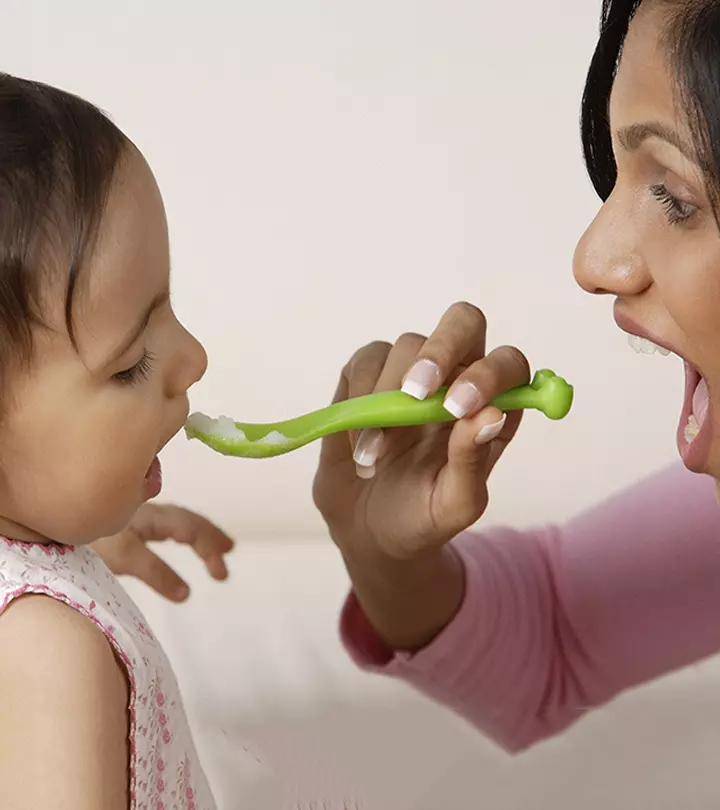

Image: ShutterStock
Are you an expectant parent receiving tons of advice from the best diaper for your little one to the best pediatrician in the city? If yes, then you must have also definitely heard about stem cell banking to preserve the stem cells post-birth of your baby. In this blog, we will take you through the importance of stem cells to protect your baby and family from over 80 life-threatening diseases like blood disorders, immune system disorders, and metabolic disorders (1). If you are interested in preserving stem cells but aren’t sure about doing it, read through to learn more and take a step toward securing your family’s future.
Now let us understand what stem cells are.
What Are Stem Cells?
Stem cells are one of the greatest discoveries of this millennium for the treatment of multiple life-threatening diseases. William Sedgwick used this term in 1886 to describe the “regenerative property” in plants (2). In modern medicine, stem cells are defined as the parent multipotent cells found throughout the body, which can differentiate into specialized cells, including the brain, bone, skin, or blood cells (3).
The stem cells can reform functional tissues and perform tissue-specific functions, regenerating the damaged tissues and replacing them with new ones (4). They also play a crucial role in treating over 80 severe medical conditions, such as Parkinson’s, Alzheimer’s, spinal cord injuries, heart disorders, diabetes, and arthritis (5).
An interesting fact: Stem cells are also known as ‘regenerative medicine due to their property of plasticity or the ability to transform into different types of cells (2).
Let us now learn about the different kinds of stem cells in our bodies.
Types Of Stem Cells
There are several types of stem cells, including Embryonic Stem Cells, Adult Stem Cells, Umbilical Cord Stem Cells, and Amniotic Stem Cells (2).
- Embryonic Stem Cells- They are obtained from embryos and have the ability to develop into any type of cell in the body (3).
- Adult Stem Cells– They are found in various tissues and organs in the body and have a limited ability to develop into different cell types (3).
- Umbilical Cord Stem Cells– These cell types are derived from the umbilical cord, which was once a discarded material post baby’s birth. They are multipotent and can form many different cell types (4). It is a powerful clinical weapon to treat many severe diseases, including sickle cell anemia, spinal cord injury, osteoporosis, etc. (5).
Ahead are some essential things to know about stem cell banking: the art of preserving the multifunctional stem cells from the umbilical cord blood.
What Is Stem Cell Banking?
Stem cell banking is the process of procuring, processing, and storing stem cells from the umbilical cord for treatments of various diseases, including cardiovascular, neurological, and orthopedic (6). It uses cryogenic technology to preserve the stem cells from a baby’s umbilical cord blood at a very low temperature (-196°C) (6). Thus, stem cell banking is a biological insurance to treat your child or family members from the impact of life-threatening diseases if the need ever arises (7). If you are looking for a stem cell bank to preserve your baby’s stem cells, then Lifecell is a trusted option.
LifeCell, India’s largest and first stem cell bank, was established in 2004. It is a choice for over 4,00,000+ parents to preserve their child’s stem cells. They provide a comprehensive stem cell banking solution, including the first initiative of community stem cell banking. By preserving your baby’s cord blood stem cells in LifeCell’s stem cell bank, you can access more than 60,000+ qualified cord blood units with a>97% chance of finding a stem cell match to protect health for generations. Additionally, they use standardized preservation procedures to preserve the stem cells for over 75 years. Now let’s look at the advantages of preserving the umbilical cord blood stem cells by stem cell banking.
Advantages Of Preserving Umbilical Cord Stem Cells
There are several benefits of umbilical cord stem cell banking.
- Non-Invasive, Easy process of procurement and processing (9).
- No risk or pain to either baby or mother (10).
- Immediately available when required and easy to ship (9).
- Umbilical stem cells have less risk of transmission of infectious diseases (10).
- They are less likely to be rejected than bone marrow stem cells. It is because umbilical cord stem cells are immature cells that produce minimal numbers of natural killer (NK) cells (9). Lesser NK cells prevent the generation of immunological mechanisms in the body from defending itself against foreign substances (10).
- Interesting Fact: Research has proved that the rejection rate of cord blood stem cell transplants is half the rejection rate of bone marrow transplants (9).
- Partial match (6/8) suitable for transplant. The stem cells derived from cord blood require less antigen tissue matching as compared to bone marrow stem cells before transplant. This allows the doctors to check the compatibility of the donor WBC antigen to that of the recipient before the transplant (9).
Ending Note!
Stem cell banking has garnered the interest of many parents to save their newborns and other family members from multiple life-threatening diseases. We hope this blog has helped you clear your doubts about stem cells and stem cell banking. In conclusion, stem cell banking is a rapidly growing field with a lot of potential for future medical treatments. By banking your stem cells, you can ensure that you have access to this valuable resource if you or a family member ever require a stem cell transplant.
So, if you are about to welcome the newest member of your family soon and looking for a solution to preserve stem cells, LifeCell offers a great opportunity. It owns all the necessary certifications from numerous national and international accreditation bodies for cord blood stem cell banking. This includes accreditations from AABB (American Association of Blood Banks), WHO, CAP, FDA, NABL, and many more.
Moreover, LifeCell owns state-of-art laboratories to make the process efficient and accurate. It is India’s first dual-storage stem cell bank, allowing customers to preserve stem cells simultaneously in two geographically distant locations. The dual storage facility at Lifecell ensures maximum safety and protection of your samples against unforeseen events like natural calamities. It also uses an advanced, eco-friendly, temperature-controlled, and water-resistant cord blood collection kit made of stainless steel to ship your sample to their labs.
So, if you are an expectant parent looking to preserve your baby’s stem cells, then simply call 1800-266-5533 or visit www.lifecell.in!
References
- https://www.ncbi.nlm.nih.gov/pmc/articles/PMC6555346/
- https://www.ncbi.nlm.nih.gov/pmc/articles/PMC2723780/
- https://stemcellres.biomedcentral.com/articles/10.1186/s13287-019-1165-5
- https://www.ncbi.nlm.nih.gov/pmc/articles/PMC3753204/
- https://stemcells.nih.gov/info/basics/stc-basics/#stc-IV
- https://www.ncbi.nlm.nih.gov/pmc/articles/PMC2720821/
- https://medlineplus.gov/stemcells.html
- https://www.mdpi.com/2227-9059/2/1/50
- https://www.ncbi.nlm.nih.gov/pmc/articles/PMC4219634/
- https://www.sciencedaily.com/releases/2008/07/080701150836.htm
Community Experiences
Join the conversation and become a part of our nurturing community! Share your stories, experiences, and insights to connect with fellow parents.













